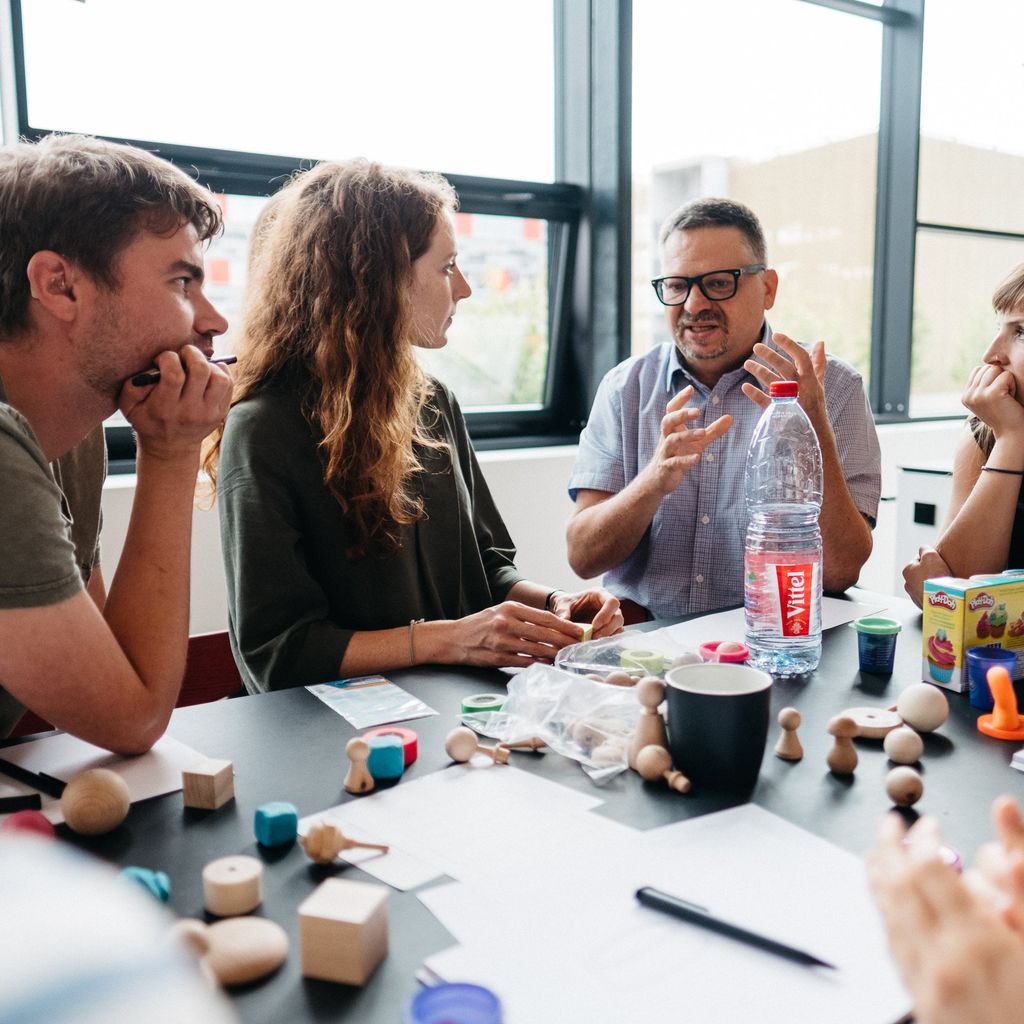Editor comment: this article by Toni Steimle and Dieter Wallach originally appeared in Upload magazine (German) and has been changed slightly by our editing team.
You can find the first part of the article, which describes the various workshops, here.
To ensure that the seven workshops run efficiently and successfully, they follow a number of key principles. Some significant principles are shown as examples below.
1. Results-Orientation
The workshop leader must already have an idea of achievable results before the workshop - not the content, of course, rather the structure.
Working with workshop cards is very helpful here. Workshop cards allow you to clearly visualize, flexibly adjust and expand on achieved results. The cards can also be used to pre-define the structure of the desired result.
Let’s take the example of the problem statement during the scoping workshop: the team wants to establish a mutual understanding of the problems, the target groups, compelling metrics to measure project success and the existing framework conditions. The structure of the problem statement is prepared so that the team can work out its content together using cards.
Using the set structure, the results are developed collaboratively step by step so that each workshop participant can easily understand.
2. Alone and Together
What would happen if a whole team tried to hold a car’s steering wheel to get to a destination? We wouldn’t want to be in the car. Some jobs are obviously better done alone. Let’s stay with the car example: it’s efficient to change between a mutual exchange of ideas and driving alone. In the team, we can discuss the best way to reach our destination and weigh up the pros and cons of various routes if necessary. Then we can decide on a driver to take over the steering.
Switching between solo and group activities is often effective as well as efficient. But which tasks are suitable for the whole team and which should be tackled alone?
Teamwork is especially difficult when there are many relatively small decisions to make. When we create a prototype, we make many decisions with differing reaches. Which navigation concept do we want to use? What level of sub-navigation are we intending to use? Which categories are we working with? If we were to look for consensus within the team for each of these decisions, we wouldn’t get very far: the discussion would be extensive and exhausting.
The creative method of design studio, for example, uses a fruitful interplay between individual and group work to generate solution suggestions for a problem area. This involves various steps. In the first step, the participants develop various solution suggestions independently. In the second step, the resulting individual suggestions are each presented and evaluated as a group. The participants then work on their drafts alone based on this feedback.
3. Balanced
In good workshops, all participants get to speak; even those that normally hold back. At the same time, participants that normally speak a lot in any given circumstance should be reined in.
Rather than simply asking for contributions on a topic, we could, for example, ask the workshop participants to note down their ideas on cards and then present them.
An interesting example of a method that relies heavily on this aspect is the closing argument. It can be used directly after the design studio to make a selection from the developed ideas. Each workshop participant is asked to explain in a short statement which solution they prefer and why.
Only when all arguments have been made do all participants allocate points. The group then uses these to decide which solution to choose.
4. Assumption-Based
In teams with different specialist backgrounds, estimations can differ greatly. Conflicts are unavoidable and not damaging in principle - on the contrary: they often contribute meaningfully to finding the solution.
There can be many conflicts in teams, as the members make different assumptions. Making assumptions is often unavoidable if a workshop is to progress; but it can be problematic if the resilience of these assumptions is not directly reviewed.
It is still important to be aware of the assumptions made. An assumption board can help.
In this board, identified assumptions are noted on cards during the workshop. Assumptions are gradually collected for later weighting. These assumptions are then entered into a coordination system with two dimensions: there is an evaluation of how serious an incorrect assumption would be for the project and an estimation of how much the team actually knows about the assumption.
The assumption board allows team members to consciously discuss their assumptions and learn what backgrounds they have. They also evaluate them using the straightforward points system, which is easy for all participants to understand.
Final Word
Efficient collaboration is possible in a cross-functional team. The benefits of cross-functional cooperation during product conception are clear to see: the team’s multidisciplinary know-how flows into product design. Often, this means that problems are uncovered early on that would otherwise only become evident during commissioning. So, costly corrections and bad investments are avoided. The team can discuss all requirements and draft possible solutions; descriptive prototypes replace long specification documents. The effort taken to create comprehensive specification documents can be drastically reduced in interdisciplinary and cross-functional teams. The team involved can identify with a product concept - all team members are responsible for the product’s success.
Efficient and target-oriented workshops can significantly improve teamwork in many phases of countless projects, and make a considerable contribution to success.





